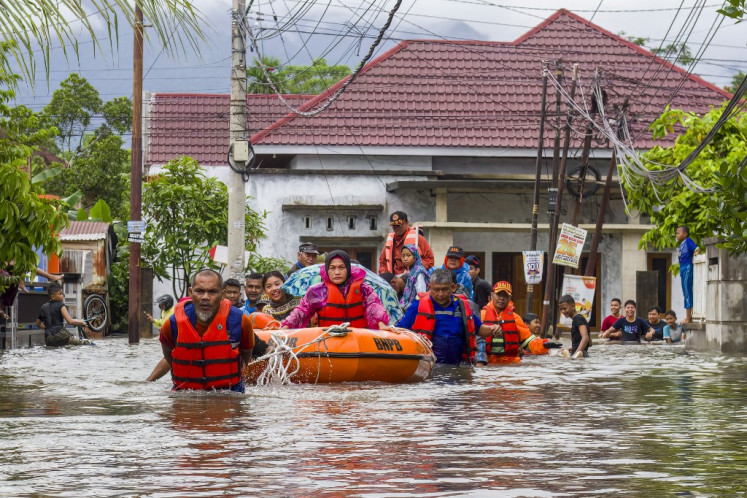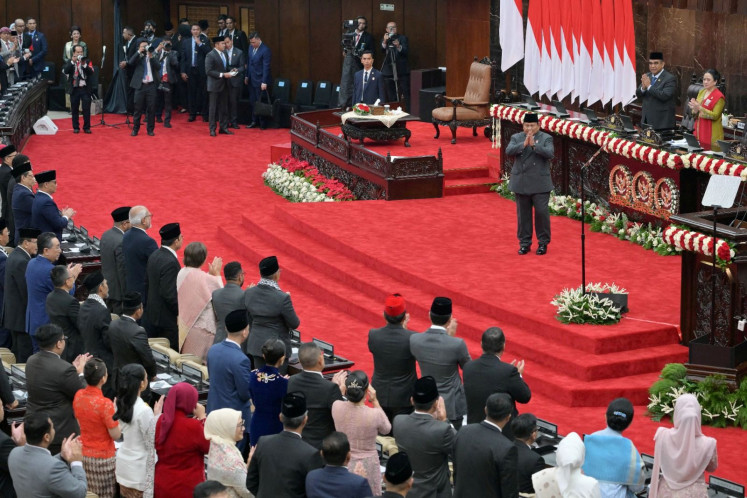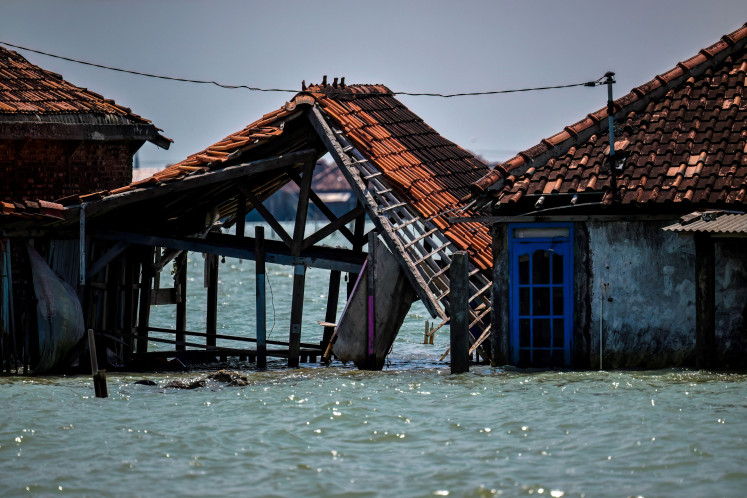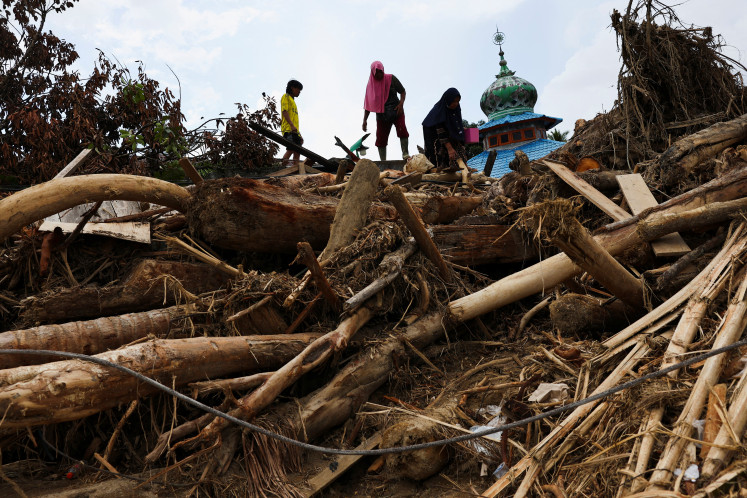Popular Reads
Top Results
Can't find what you're looking for?
View all search resultsPopular Reads
Top Results
Can't find what you're looking for?
View all search resultsChina-Russia pipeline diplomacy threatens Trump's energy grip
Prior to his appearance with Putin at last week's Victory Day event, Xi signaled a new chapter in Beijing's energy diplomacy by signing a bilateral agreement on a new pipeline in defiance of Washington's attempt to isolate Moscow, setting the stage for sharper tensions in the China-US great power rivalry.
Change text size
Gift Premium Articles
to Anyone
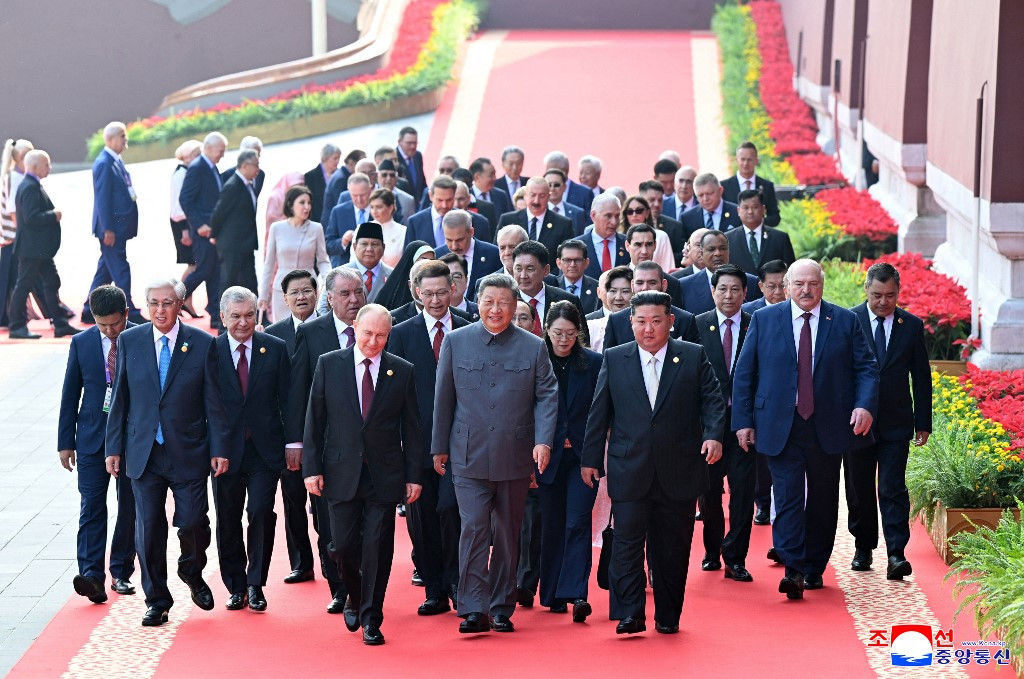 Chinese President Xi Jinping (center, front row) walks with Russian President Vladimir Putin (left, front row) and North Korean leader Kim Jong Un (right, front row) as they lead a group of other officials to attend the 80th Victory Day parade military parade in Beijing's Tiananmen Square on Sept. 3, 2025, in this picture released on Sept. 4 by the Korean Central News Agency (KCNA) of North Korea. (AFP/KCNA via KNS)
Chinese President Xi Jinping (center, front row) walks with Russian President Vladimir Putin (left, front row) and North Korean leader Kim Jong Un (right, front row) as they lead a group of other officials to attend the 80th Victory Day parade military parade in Beijing's Tiananmen Square on Sept. 3, 2025, in this picture released on Sept. 4 by the Korean Central News Agency (KCNA) of North Korea. (AFP/KCNA via KNS)
T
he high-stakes energy diplomacy in Beijing last week signals China’s willingness to defy United States President Donald Trump’s efforts to isolate Russia and assert US energy dominance.
Chinese President Xi Jinping, sitting alongside Russian President Vladimir Putin, used a military parade this week marking 80 years since Japan's defeat in World War Two to project Beijing's military and diplomatic clout amid heightened trade tensions with Washington.
China backed the pageantry with action on Tuesday, when Russian gas giant Gazprom announced the sides had signed a legally binding memorandum with Moscow for the construction of Power of Siberia 2: a 2,600-kilometer gas pipeline that will run between the two countries and a project that has struggled to take off after more than a decade of fruitless talks. China will also boost the already large gas volumes it imports through the existing Power of Siberia pipeline.
Gazprom CEO Alexei Miller said on Tuesday that the two countries had agreed to increase supplies via the pipeline to 44 billion cubic meters (bcm) a year from 38 bcm.
Additionally, both sides agreed to raise the volume of Russian gas deliveries to China via a pipeline from Sakhalin Island in the Russian Far East by 20 percent to 12 bcm annually.
Taken together, this is yet another indication of the growing ties between Beijing and Moscow, but more importantly, it is a signal that China is not planning to back down in the face of US pressure.
Of course, several major hurdles remain for the new Siberian project.
First and foremost, the sides have yet to agree on the price of the gas that will be transported through the pipeline. The Gazprom CEO indicated that the price would be lower than what European buyers paid in the past.
It also remains unclear whether China will require the additional volume.
Chinese companies in recent years have signed many long-term liquefied natural gas (LNG) supply deals, including with US producers, amounting to around 50 bcm per year of additional supplies through 2030, according to the Institute for Energy Economics and Financial Analysis (IEEFA). On top of that, China ramped up its domestic gas production 28 percent between 2020 and 2024 to 246.4 bcm, IEEFA noted.
The bigger problem could be strategic.
Completing the new project would cement Russia's position as the biggest natural gas supplier to China, and that could be a concern for Beijing.
Russia supplied around 22 percent of China's gas imports in 2024, or around 38 bcm, when including pipeline gas and deliveries of LNG, according to data from the Energy Institute's Statistical Review of World Energy.
The new volumes from the existing pipeline would raise Russia's share in China’s imports to over a quarter next year, assuming an increase in the country’s gas demand. Adding another 50 bcm capacity from the new pipeline, which likely would not come onstream before 2030, would therefore double Russia's share of China’s gas imports.
And that would seemingly undermine Beijing's decades-long effort to reduce its reliance on energy imports and diversify its supply sources.
But in today’s new global environment, what might matter more is that Putin and Xi appear politically invested in making the project work.
For Russia, the agreement offers a long-term market for its vast natural gas reserves: something that has become particularly important since Europe, Russia's biggest gas market for decades, began to wean itself off Russian gas following Moscow's invasion of Ukraine in 2022.
For China, this appears to be another shot across the bow in the economic standoff with Washington. On a practical level, importing larger volumes of gas from Russia would reduce Beijing's need to increase US LNG imports, one of the major promises many other countries have made in trade talks with the Trump administration.
And then there is the desire to signal defiance, a negotiating tactic in itself.
It is notable that last week, China imported its first LNG cargo from Russia’s Arctic LNG 2 plant despite heavy US sanctions, undermining Trump’s attempts to isolate Moscow and pressure Putin over Ukraine. Other cargoes from the plant could be heading to China.
The Trump administration has yet to respond to the cargo’s arrival in Beihai, but its timing, coming just days before Putin’s visit, is unlikely to be a coincidence.
This new age of energy diplomacy is rapidly evolving, but it currently appears to be setting the stage for sharper tensions between the world’s two largest economies.
---
The writer is a columnist for Reuters.





